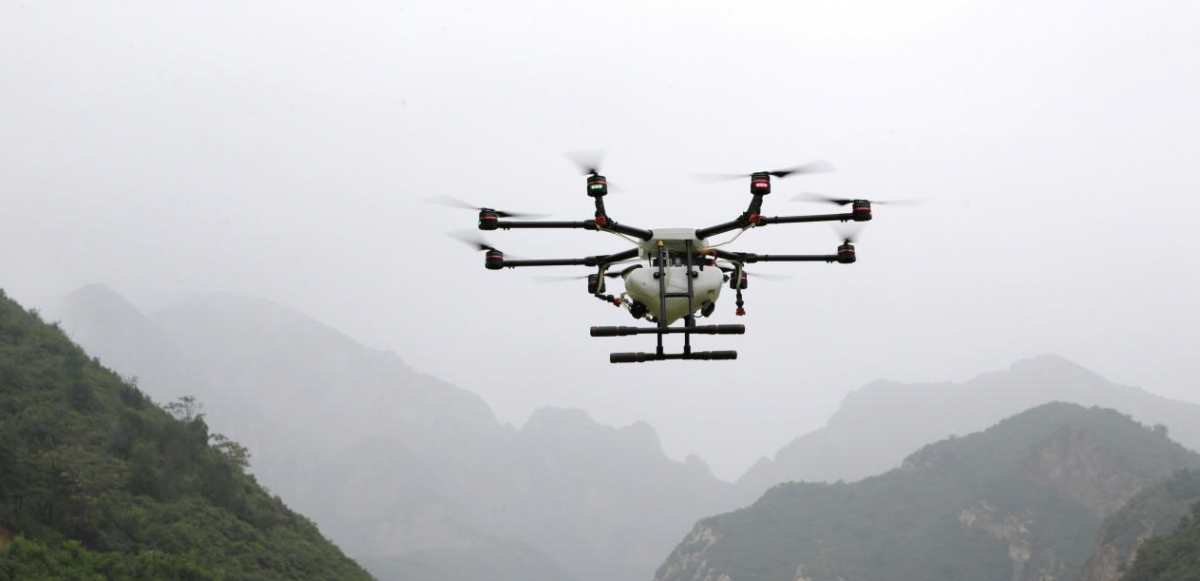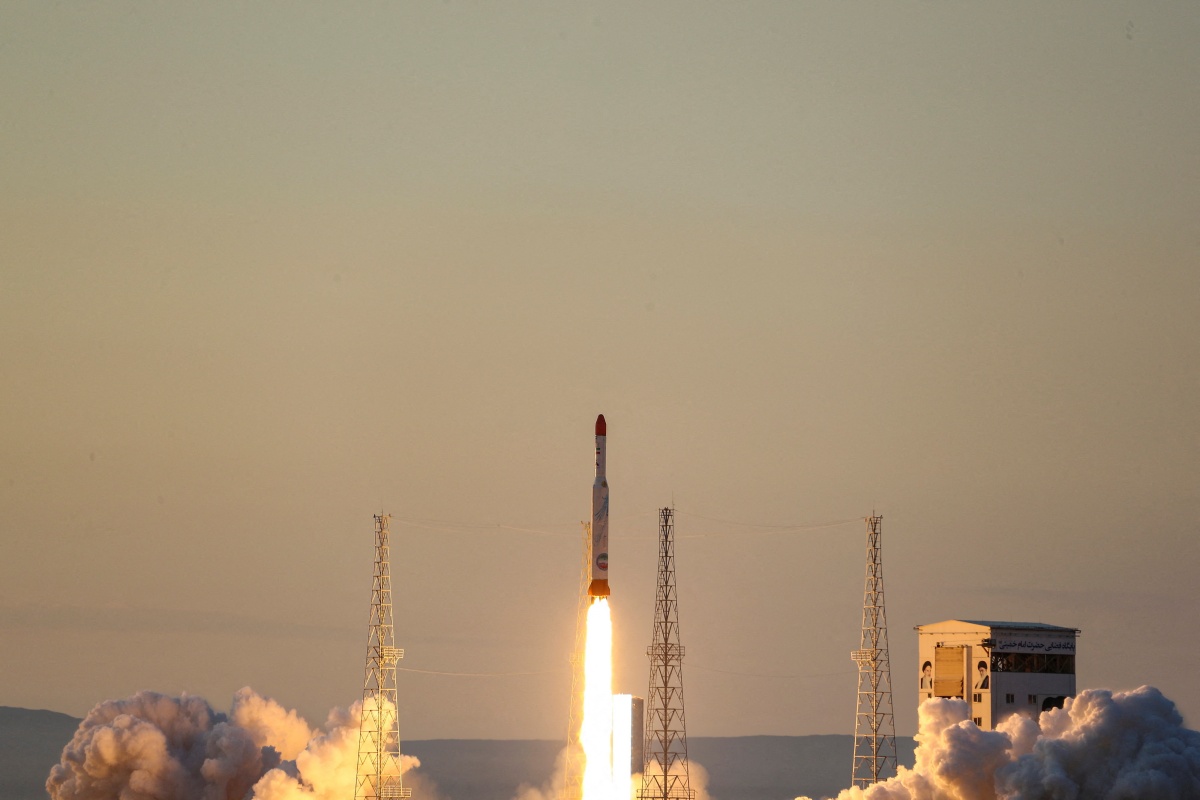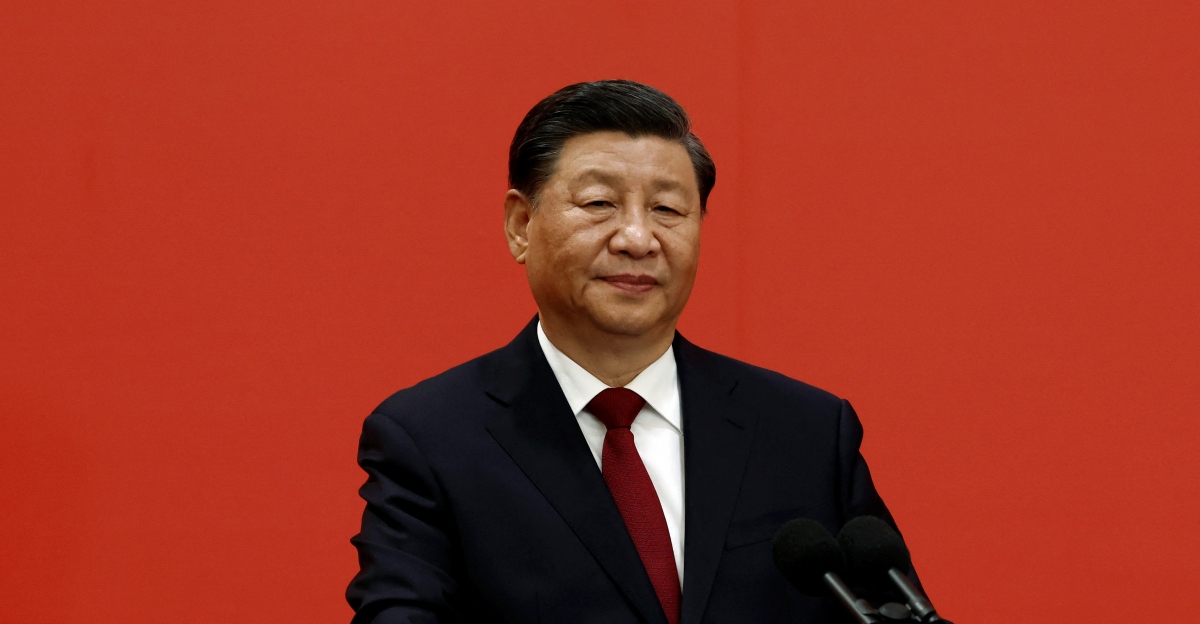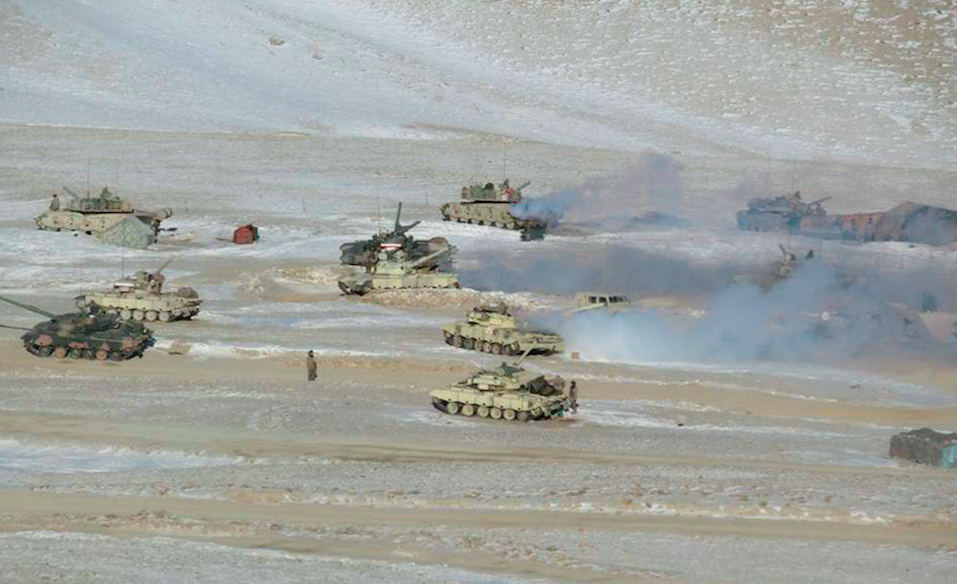Eight Reasons Why General Naravane is Wrong About the Future of War

In his first article since retirement, General M.M. Naravane has exposed Indian army’s lack of understanding of present and future wars. This is worrying, especially when the People’s Liberation Army (PLA) is at the forefront of the new war, both in terms of its science (technologies) and art (war concepts).
The PLA is not only India’s main military challenge and has occupied fresh territory since April 2020, it also openly threatens “reunification” of Arunachal Pradesh with Tibet. The United States, in its 2022 National Defence Strategy, has called the PLA the ‘pacing challenge’ capable of matching its military’s emerging technologies, war concepts, and defence ecosystem. And yet, the Indian Army remains oblivious to the PLA threat.
This is evident from General Naravane’s article in which he uses generalities to touch upon disparate weapons platforms (which are inconsequential) – not present and future technologies – and draws lessons for the Indian army from the Ukraine war. The fact is that the war that India faces from China will be unprecedented. I will explain in eight points that General Naravane needs more clarity on technologies which will shape the present and future wars.
1. Character of war
First, he writes, ‘It is near impossible to predict the character of future wars.’
This is not correct. Since 2010, the US military knew that the character of war (how war would be fought) was changing rapidly. Its second offset strategy capabilities had been matched by the PLA. These included superior intelligence collection platforms; battle networks which connect sensors, command post for decision-making and shooters (which the PLA calls operational systems); and precision, guided and stand-off munitions. The PLA could close the kill chain or the OODA loop (Observe, Orient, Decide, Act) as quickly as the US military. The PLA could do stand-off precision attacks at long ranges as good as the US military with its indigenous mortars, rockets, missiles, and artillery projectiles most of which were guided. Coupled with increasing miniaturisation, guided weapons brought unprecedented lethality at long ranges. Moreover, the PLA had developed an industrial base and ecosystem for largest inventory of land-based missiles in the world.
Thus, by 2010, the PLA had made the US military’s Network Centric Operations (which were first showcased by it in the 1991 Operation Desert Storm against Iraq) redundant since it could do ‘systems destruction warfare’ to destroy US battle networks by kinetic (land-based missiles) and non-kinetic (cyber and electronic warfare) means. This would disrupt, destroy, or incapacitate US’ military communications at all levels.

The Rocket Force under the Eastern Theatre Command of China’s People’s Liberation Army (PLA) conducts conventional missile tests into the waters off the eastern coast of Taiwan, from an undisclosed location in this handout released on August 4, 2022. Photo: Eastern Theatre Command/Handout via Reuters
To meet the PLA’s grown challenge, the Pentagon announced the third offset strategy (to offset PLA’s capabilities) in 2014. This involved the use of Artificial Intelligence (AI) in all aspects of warfare. Today, the US military and the PLA are competing in autonomous robotic war, called integrated deterrence and intelligentised war respectively. This has changed the character of war once more.
Meanwhile, once the PLA developed capabilities to contest, compete, and combat with the US military in the space, cyber, and electromagnetic spectrum (EMS) battle spaces, it declared them new war domains in its 2014 military strategy. Next, China did structural reforms in 2015 and created two formidable organisations: PLA Strategic Support Force (PLASSF) comprising cyber, EMS, Space, and ‘three warfare’: public opinion warfare, psychological warfare (colloquially called wolf diplomacy), and legal warfare. The other organisation was PLA Rocket Force (PLARF) comprising nuclear and conventional land-based missiles.
The 2015 reforms were to be accomplished in five years. At present, the PLA has capabilities to destroy the Indian military’s communications at all levels of war and render various headquarters and formations incapacitated, leading to chaos in the chain of command. The Indian military has insignificant capabilities in cyber, EMS and space divisions. The reality is that without competitive capabilities in these domains, the war will be lost quickly.
The PLA calls this informatised warfare, and this is the present. When the US and western militaries were aware of how the character of war had changed not once but twice in the last 12 years, why was the Indian army unaware of it?
2. Drones and the five domains of war
Two, skipping military strides made since 2010, General Naravane is fixated on the era of ‘drones or quadcopters’ (weapons platforms) which have ‘military applications and [are] used for everything from surveillance to kamikaze attacks.’
To put things into perspective, all quadcopters (helicopter with four rotors) or Unmanned Aerial Vehicles (UAVs) are drones, but all drones are not UAVs since they include unmanned systems in air, ground, sea, and undersea which are piloted remotely or autonomously.
All drones use technologies in five domains of war. Drones cannot operate in an environment without good control over EMS and cyber. Drones cover the domains of space (for GPS communication), land, and air. Thus, drones would have an operational role between peer competitors like India and Pakistan, or the PLA and the US military. Not between the PLA and the Indian military, since it would be impossible for Indian drones to breach the PLA’s Anti Access Area Denial (A2AD) firewall on the LAC which includes cyber, EMS, counter-space, laser, and microwave weapons capabilities. Laser power weapons, which are scalable, can take out UAVs; and microwave weapons can burn and destroy electronics.
There is no mention of cyber, EMS and space in General Naravane’s article.

Representative image of a drone. Photo: Reuters/Jason Lee
Moreover, drone swarms are still at a formative stage. The 75 drones swarm demonstrated by the Indian army on January 15, 2021 when General Naravane was the army chief was a stage-managed exercise. The then army commander, Lt Gen. Raj Shukla in on record saying that a retired air force officer, Sameer Joshi who claimed to swarm drones did 15 rehearsals before the actual demonstration. ‘The biggest concern was that no drone should fall on the audience…,’ Shukla said during a talk at United Services Institution (at 1hr19m19s) As far as the payment was concerned, according to Shukla, the ‘Army Design Bureau paid Joshi 200 crore’ for the demonstrations and future orders even as the technology was not matured.
3. AI in war
Three, Navavane says ‘new technologies are heralding the end of the 20th century battlefield – main battle tanks, manned aircraft, and large surface ships. The vulnerabilities of all three have been amply exposed and unmanned alternatives are already under testing.’
His proposition is not correct since he does seem to understand Artificial Intelligence (AI) in war. AI is about simulating human intelligence into all aspects of war.
AI comprises of six stacks:
- The first is human resource or talent without which nothing moves forward.
- The second is hardware (chips) on which everything runs.
- The third are software algorithms or mathematical equations that drive machine learning.
- The fourth is plenty of good quality datasets which are required for machine learning (by deep learning neural networks) to evolve and make the machine/robot/network intelligent.
- The fifth are applications where deep learning trained algorithms are applied to specific tasks like simulation, sensor fusion, administration, logistics, planning, image recognition, battlefield damage assessment, data analytics, decision-making, and so on.
- And, finally, the integration of specific applications into the Internet of Military Things (IoMT) architecture according to the mission requirement.
- The US leads in the first three, while China excels in the last three of the stacks.
Against this backdrop, it become clear that while the trend in AI driven software war will be to move from massed forces, monolith platforms and legacy systems like manned tanks, aircraft, and ships, they will not become redundant. The capabilities of legacy platforms can be enhanced substantially by embedding AI systems in them. The PLA is at the forefront of doing this. Moreover, AI enabled legacy platforms will be used for command and control of Human-Machine Teaming (MHT) of robots/ drones with field formations until human trust in AI grows.
Going by the ease of taskings, AI will first be embedded in missiles which will become LAWS (Lethal Autonomous Weapons) colloquially called killer robots, followed by decision-making computers/ machines/ software networks through Human Machine Collaboration (HMC) and finally it would be MHT of humans with intelligent platforms/ robots/ drones. This progressions of AI in warfare should have worried General Naravane since the Indian military is yet to understand what constitutes AI in warfare.
Moreover, the PLA is likely to use AI in individual technologies for stand-alone wars like cyberwar, cognitive electronic war, missiles war, drones war, Light war (directed energy weapons), fusion war (converting datasets into and actionable intelligence by edge compute) and intelligent networks war with far reaching operational implications.
4. Civil-military fusion
Four, General Naravane says ‘systems at the drawing board stage will have to be even more futuristic if they have to be around at the turn of the century’.
He is wrong.
Systems – present and futuristic – embedded with software algorithms will get supplanted by better AI algorithms quickly without even the adversary getting to know about it, leading to operational surprises. Moreover, unlike legacy platforms developed and produced for years in a nation’s military-industrial complex, most new capabilities are being incubated in commercial software companies like Microsoft, Amazon, Huawei, Taiwan Semiconductor Manufacturing Corporation (TSMC) and so on, with spin-offs in the military sector.
AI and most emerging technologies, after all, impact a nation’s economy, national security, welfare, and geopolitics. This explains why the US remains worried about China’s civil-military fusion: integration of military, software engineers, data analysts, commercial enterprises, and academia.
Furthermore, the futuristic roadmap of the new war is well identified. It will be ‘battlefield singularity’ by 2035. It is believed that AI enabled war would be accelerated to the point where humans would not be able to keep pace with the tempo of operations. At this point, while being responsible for ultimate decision-making, humans would no longer be in the loop for each decision in combat. Once AI reliability improves and human trust grows in machines by experimentation and use in actual operations, war concepts will then be limited only by imagination, computing power, data strategy, civil-military fusion, and traditional resistance of militaries to change.
And LAWs (Lethal Autonomous Weapons) would be at the front of autonomous combat. Battlefield singularity means that in the combat zone, it will not be HMC, but only machines/computers for decision-making and Human Machine Teaming for combat. The Human will do the higher task of cognition and have fingers on the emergency button should things go horrible wrong.
According to Professor Zhang Yongchao of the China Institute for International Strategic Studies as narrated in my book The Last War:
‘By 2035, there will be independent military operations. The entire warfare systems consisting of high-intelligence terminal and combat units will work independently to fulfil strategic intentions. Robots and humans will march together onto the battlefield, and the former will take centre stage, playing a very important role. This is no longer hard to imagine – this is the beginning of the anthropomorphism of major types of weaponry, as the intelligence of such equipment is brought up to the level of human intelligence. At such time, not only human soldiers will take the battlefield. In fact, robotic troops may be stronger and more efficient at fighting than humans. In terms of the elements that define fighting capacity, it will no longer be just humans, weapons, and the integration of those two; people will also have to take into consideration the level of intelligence of weapons systems as represented by intelligent robots.’
5. Nature of war
This brings me to the fifth point made by General Naravane. ‘What has not changed (since warfare began) is the primeval nature of war.’
Unlike the character of war which keeps changing with new technologies and war concepts, it is believed that the nature of war (what war is) never changes since it is associated with violence, bloodshed, and loss of lives.
However, in 2018, former US defence secretary James Mattis questioned the veracity of the nature of war. According to him:
‘If we ever get to the point where it’s (war is) completely on automatic pilot (only unmanned combat) and we’re spectators, then it’s no longer serving a political purpose (with no loss of human lives). And conflict is a social problem that needs social solution.’
I believe that war then would still serve a political purpose by cognitive defeat of the enemy. Between peer competitors like the US military and the PLA, once intelligent robots of both sides can fight one another, the war focus will shift from combat zone (operational battlespace) to war zone (strategic level, which is whole-of-nation) with cyber and space domains coupled with PLA’s ‘three wars’ disrupting lives of ordinary citizens. Loss of human lives in war will be replaced by huge disruptions and disturbances amongst civilian population.

A person wearing a balaclava is silhouetted as he poses with a laptop in front of a screen. Photo: Reuters illustration/Dado Ruvic
At present, in cyberspace, through which cyber weapons move, there is convergence of the cyber and physical domains. Since this has blurred the boundaries between the two, firewalls have become meaningless. A determined enemy like the PLA with capabilities in nanotechnology, high computing, and skilled cyber-warriors, and which can write sophisticated algorithms for a variety of counter-value software weapons, would be able to target enemy’s power stations, hospitals, telecom, railways, airports, financial institutions and so on – to bring the lives of citizens to a standstill, leading to chaos.
Moreover, AI accelerated cyber-attacks will increase disruptions. For example, AI embedded malware (malicious software) will be able to mutate into thousands of different forms once it is lodged on a computer system. Armed with deep reinforced learning (where decision-making by malware is done by rewards method) can find vulnerabilities, conceal itself, and attack selectively. This will make cyber-attacks more precise, accelerated, stealthier, persistent with capability to launch cyber campaigns on a large scale.
Regarding space, China is vigorously pursuing a broad range of counter-space capabilities which include direct-ascent anti-satellite (ASAT) missions, co-orbital ASAT missions, micro satellites, ground-based satellite jammers, directed energy weapons (DEWs), and computer network operations.
A co-orbital ASAT, placed in space, can remain dormant for years before being activated. Among the PLA’s non-kinetic capabilities what bother the US is its cyber offence, wherein cyber weapons passing through cyberspace could damage, incapacitate, and destroy satellites in all orbits. The other silent killers are DEWs and micro-satellites. DEWs comprise high powered lasers (HPL) and high-powered microwave (HPM) weapons meant to disrupt and disable satellites by damaging their electric systems. With progress in these technologies, especially HPL, the PLA could do much more.
In addition to DEWs, the PLA has made strides in microsatellites. Any object (man-made or natural satellite) with mass greater than 10 kg and less than 100 kg qualifies as a microsatellite. These could be debris or weaponised satellites. The latter, with the advantage of being cheap, harder to track, and having good manoeuvrability, can move at high velocity. They could collide with the targeted satellite and destroy it or could lock on the targeted satellite as parasite and destroy its electronics.
A form of microsatellite – co-orbital satellites with robotics arms – being developed by the PLA could displace a satellite from its orbit by mechanical means and render it ineffective. India’s intelligence gathering, earth observation, and scientific spacecraft are most susceptible to these co-orbital threats.

Representative image. Photo: Ministry of Defense of Iran/WANA/Handout via Reuters
Moreover, in addition to space-based jamming, and accurate air and missile attacks, the PLA could also do high altitude nuclear explosions referred to as High Altitude Electromagnetic Pulse (HAMP). The latter creates an instantaneous intense energy field that can overload or destroy at a distance numerous electric systems and high technology micro-circuits and render satellites dead. This will create gaps in a constellation of satellites in low earth orbit (Starlink) set up for communications and for directing missiles.
Between peer competitors, cyber and space have recently been added by China in the concept of strategic deterrence and will be employed for combat at the strategic level of war. Since World War II, nuclear weapons have been the sole determinant of strategic deterrence. However, China has expanded the scope of ‘strategic deterrence’. At the recent 20th National Congress, Xi Jinping redefined the definition of deterrence by calling for ‘a strong system of strategic deterrence.’
Also read: Interview | ‘A Xi Jinping Show’ All the Way: India’s Key Takeaways From the CPC Congress
6. Doctrines and technologies in tandem
Sixth, according to General Naravane, the earlier trend of new doctrines (set of principles which provide a roadmap for war concepts) following new technologies has been reversed. Now, technologies emerge first and ‘doctrines (are) being formulated or re-aligned to see how these new (technology driven) “products” fit into the overall military capability development matrix.’
General Naravane has missed the uniqueness of the PLA. China has always given importance to strategic thinking or theory-building which leads to doctrines/war concepts and technology procurement. Theory-building is a dynamic process wherein a nation studies world trends and adopts them to suit its own genius. Thus, doctrines/war concepts and technologies have always moved together in the PLA.
For example, China realised the need to acquire nuclear weapons and delivery systems in the 1950s. However, until it announced its nuclear doctrine of ‘minimum nuclear deterrence’, it maintained the notion of nuclear weapon nations being paper tigers. Similarly, in October 1992, impressed by the US army’s Operation Desert Storm the previous year, the PLA under general secretary Jiang Zemin at the 14th National Congress modified the early Deng Xiaoping doctrine of ‘people’s war under high-tech conditions’ to read ‘future war under high tech conditions.’ Since China in theory-building had identified the US as the world power expected to thwart its global ambitions, it set about preparing for five-dimensional war to include cyber and EMS rather than the three-dimensional with land, air, and sea.
Fast forward to the present. Realising that in the AI-enabled war, software technologies like cloud, edge computing, big data, IoMT, cyber, EMS management, electronic warfare, killer robots, networking etc and doctrines/ war concepts will need to move together at rapid pace, the PLA, under its 2015 reforms, brought the software engineers and military officers together under the same roof. This also helped in civil-military fusion essential for pooling national resources for the new war. During an interaction at the PLA’s premier institute, the Academy of Military Sciences (AMS), senior PLA officers told me that since the reforms, the strength at the AMS had increased from 1,000 to over 10,000 officers.

Chinese President Xi Jinping speaks as the new Politburo Standing Committee members meet the media following the 20th National Congress of the Communist Party of China, at the Great Hall of the People in Beijing, China October 23, 2022. Photo: Reuters/Tingshu Wang
Moreover, at the recent 20th National Congress, while laying the emphasis on ‘reunification with Taiwan’, Xi Jinping, as part of theory-building, instructed the PLA to be prepared for ‘regional wars.’ According to him, ‘we (PLA) need to be able to stage military operations readily, create a secure environment, deter and control risks and conflicts, and win regional wars.’ In his 2017 report to the 19th National Congress, Xi had omitted mention of winning ‘regional wars’ which indicated that he wanted the PLA to prepare for war with a major power (US military).
Speaking at the Atlantic Council, a few days before Xi exhorted the PLA, chief of US naval operations Admiral Michael Gilday said that the world must get ready for China’s potential invasion of Taiwan, because ‘Xi Jinping may be much more willing than previously thought to seize Taiwan’.
When asked what he thought of the assumed deadline of 2027, as expressed by other US experts, Gilday said, “…[W]hen we talk about the 2027 window in my mind, that has to be a 2022 window or potentially a 2023 window.” He added for good measure, “I don’t mean at all to be alarmist by saying that. It’s just that we can’t wish that away.”
Borrowing his disclaimer, one has to say at the cost of sounding alarmist that the first milestone on Xi’s ‘reunification’ of Chinese territories is Tibet, not Taiwan. Reunification of Tibet – read, war for occupation of Arunachal Pradesh – would set the stage for return of Taiwan to the motherland. This is because:
(a) a quick decisive defeat of India will debilitate the US’s Indo-Pacific strategy in the India Ocean region,
(b) impair US western Pacific strategy since the US will be seen as an unreliable strategic partner by ASEAN which is central to Washington’s Indo Pacific strategy, and
(c) provide the PLA with first mover advantage in testing its informatised and intelligentised wars against the US military.
In my assessment, the potential window for Tibet reunification would be within the next two years.
7. No boots on the ground
Seven, General Naravane (echoing the Indian military) believes that ‘technology will never supplant the necessity of boots on ground.’ He added that ‘what has also not changed is the centrality of land in all formulations.’
Since the Indian military still follows the US 1986 Air-Land war concepts which are focused on tactics in war, General Naravane has failed to realise that the PLA will combat with the medium-level Indian military at the strategic and campaign (operations) levels, totally bypassing the tactical level of war which is the strength of the Indian army (and the other two services). In the PLA war against the Indian military with outdated technologies and three generations’ old war concepts, the land forces (army) will have minimal role in a decisive war of occupation. Since the Indian military fights a tactical level war with the Pakistan military, it has missed three generations of technologies and war concepts comprising network centricity and new war domains, informatisation, and intelligentisation.
The Indian military has been struggling since April 2020 to cope with the PLA’s grey zone operations, which include everything done below the threshold of war including the June 2020 Galwan incident.

FILE IMAGE: Indian and Chinese troops and tanks disengage from the banks of Pangong lake area in Eastern Ladakh. Photo: PTI/Indian Army handout
These comprise cyber-attacks, non-kinetic counter-space operations, tactical shifting on the Line of Actual Control, collection of enemy information by its Huawei 5G wireless network and fiber optics cables on the LAC, and gathering of signal intelligence (SIGINT), electronic intelligence (ELINT), and communication intelligence (COMINT) which will help end its informatized war quickly and decisively. The PLA could also snap undersea cables which bring the internet to India through landing stations since Chinese undersea cables’ repairing ships are in the region.
In war, the PLA will use its Rocket Force with precision as the first line of attack across the entire combat zone, and exercise total war control by dominating the cyber, electromagnetic, and space domains for denial of communications to the Indian military. Once the Indian army and IAF are blinded in the first 72 hours, the PLA will exert total control over war aims, war concepts, speed, tempo, intensity, and outcome. This involves seizing the initiative, paralysing the enemy, dominating the escalation ladder, and laying grounds for war termination on one’s own terms. The PLA war will be unleashed suddenly without warning, crisis, and pre-war periods.
The PLA could assault thousands of Indian soldiers holding the forward edge and operational depth of the combat zone with its version of slaughter bots. These have AI-based facial recognition (the Chinese are world leaders in this capability called Computer Vision) and a nose-shaped explosive meant to hit and penetrate the human face. These could be released in the thousands by the PLA. Thus, instead of the traditional Indian Army slogan of ‘one bullet, one enemy’, it will be ‘one slaughter bot, one enemy’ with no PLA soldier required in close combat. Thus, boots on the ground are no longer essential for the PLA in combat.
The PLA war could be compared with the 1991 Operation Desert Storm between a major power and a medium-power Iraq. At that time, all military experts expected Iraq’s army to give a bloody nose to the US army once the land war was joined. This did not happen. After 43 days of the US Air Force’s campaign, the US army did 100 days of mopping-up operations since nothing was left of the so-called battle-hardened Iraqi army.
PLA’s war will be worse. In addition to the PLASSF and PLARF, the Chinese military – being networked – will have real-time situation awareness. It has built a formidable A2AD firewall on the LAC. It has a huge inventory of land-based accurate missiles with an automated production base for surge requirement.
It has fifth and fourth generation aircraft, drones with all services; has assassin mace weapons: thermobaric warheads or vacuum bombs which will force Indian soldiers to come out into the open from their defences. Thermobaric weapons suck out oxygen from closed spaces (defences) and turn them into fuel that can ignite; has mini killer robots that use field cameras, tactical sensors, facial recognition, and sharp explosives (about 3 grams of TNT which hits the human face at great speed); and around 150,000 airborne combat troops for mopping up operations. The Indian political leadership will be under huge cognitive pressure both from chaos in the war zone and body bags from the combat zone.
8. No lessons from Ukraine for India
Lastly, General Naravane says that the Ukraine war has ‘brought to the fore the urgent need to re-assess war-fighting doctrines and techniques…’
The Indian military should not draw wrong lessons from the Ukraine war since it is between two major powers: Russia and the US and Nato fighting by proxy. The US and Nato is fully supporting the Ukraine army with real-time intelligence and communications (Elon Musk’s Starlink), war materiel, missiles, training and even a few troops. In this war, Ukrainians are the fodder.
The war has got prolonged for two reasons: Russia held back a majority of its war capabilities to cater for the contingency of the US and Nato directly entering the war. And two, Russia military’s initial assessment when it launched ‘special military operations’ was not correct. It underestimated the US and Nato determination to support Ukraine.
Given this, Ukraine is not the right example for the Indian military to re-assess its doctrines and techniques since it has been reduced to tactical level engagements. The Indian military leadership should study the PLA, something they have not done. This is the only message of General Naravane’s maiden article.
Pravin Sawhney is the author of The Last War: How AI Will Shape India’s Final Showdown With China.



